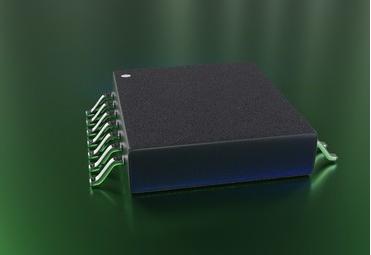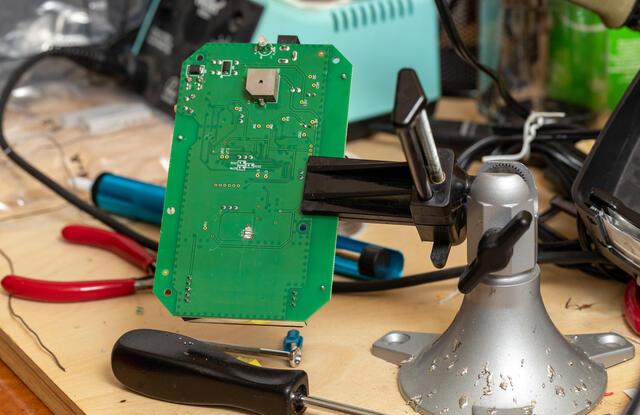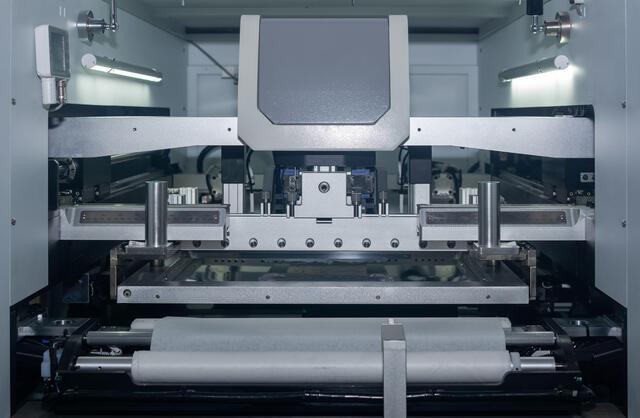Content Menu
● Understanding SMT Lines
● Key Features to Look For in SMT Machines
● Top SMT Line Machines for Efficient Production
>> Yamaha YSM20R
>> Panasonic NPM-W2
>> ASM SIPLACE TX Series
>> Fuji AIMEX III
● Factors Influencing the Choice of SMT Machines
● The Role of Automation in SMT Lines
● Maintenance Considerations for SMT Machines
● Industry Trends Impacting SMT Machine Selection
● Cost-Benefit Analysis of Investing in High-End SMT Machines
● Conclusion
● FAQ
>> 1. What is Surface Mount Technology (SMT)?
>> 2. How does a pick-and-place machine work?
>> 3. What are the advantages of using an automated optical inspection (AOI) system?
>> 4. How important is speed in SMT production?
>> 5. Can SMT lines handle different component sizes?
Surface Mount Technology (SMT) has revolutionized the electronics manufacturing industry by enabling the efficient assembly of printed circuit boards (PCBs). Selecting the best SMT line machine is crucial for manufacturers aiming to optimize production efficiency, reduce costs, and maintain high-quality standards. This article explores the top SMT line machines available today, their features, and how they contribute to efficient production.

Understanding SMT Lines
SMT lines are specialized production setups designed for assembling electronic components onto PCBs. These lines typically consist of several key machines that work in concert to ensure a streamlined manufacturing process. The main components of an SMT line include:
- Pick and Place Machines: Responsible for accurately placing components on PCBs.
- Solder Paste Printers: Apply solder paste to the PCB pads where components will be mounted.
- Reflow Ovens: Melt solder paste to create permanent connections between components and the PCB.
- Automated Optical Inspection (AOI): Check for defects in component placement and solder joints.
Each of these machines plays a critical role in ensuring that the assembly process is efficient and that the final product meets quality standards.
Key Features to Look For in SMT Machines
- Speed and Throughput: Machines should have high placement speeds (measured in components per hour, CPH) to meet production demands.
- Precision: High accuracy in component placement is essential to minimize defects.
- Flexibility: The ability to handle a variety of component sizes and types allows manufacturers to adapt quickly to changing product designs.
- Automation: Advanced automation features can significantly reduce manual labor and improve efficiency.
- Software Integration: Modern machines often come with software that supports real-time monitoring, predictive maintenance, and automated setup processes.
Top SMT Line Machines for Efficient Production
Several manufacturers produce leading SMT machines known for their efficiency and reliability. Here are some of the best options available today:
Yamaha YSM20R
The Yamaha YSM20R is renowned for its high-speed performance and exceptional accuracy.
- Speed: Capable of placing up to 40,000 components per hour.
- Features: Dual-lane conveyor system, advanced vision technology for precise placement, and modular design for easy upgrades.
This machine is ideal for manufacturers looking for speed without compromising on quality.
Panasonic NPM-W2
The Panasonic NPM-W2 strikes a balance between speed, precision, and flexibility.
- Speed: Offers a placement rate of approximately 30,000 CPH.
- Features: Multi-functional head capable of placing various component sizes, intelligent software that optimizes performance and minimizes downtime.
This machine is suitable for high-volume production while maintaining versatility in component handling.
ASM SIPLACE TX Series
The ASM SIPLACE TX series is known for its high throughput and exceptional placement accuracy.
- Speed: Can achieve up to 100,000 CPH under optimal conditions.
- Features: Automatic nozzle changers and intelligent feeders enhance productivity.
This series is particularly beneficial for manufacturers requiring high-speed assembly in demanding environments.
Fuji AIMEX III
Fuji's AIMEX III excels in both high-mix and high-volume production scenarios.
- Speed: Offers competitive placement rates while maintaining flexibility.
- Features: Scalable platform that allows customization based on specific production needs, advanced vision systems for precise component placement.
Ideal for manufacturers who need a versatile solution that adapts to varying production requirements.
Factors Influencing the Choice of SMT Machines
Choosing the right SMT machine involves considering several factors:
- Production Volume: Higher volumes may necessitate machines with greater speed and automation capabilities.
- Component Types: Different machines excel at handling specific types of components; understanding your product mix is essential.
- Budget Constraints: While investing in high-quality machines can yield long-term savings, initial costs must align with budgetary constraints.

The Role of Automation in SMT Lines
Automation plays a significant role in enhancing the efficiency of SMT lines. The integration of automated systems can lead to:
- Reduced Labor Costs: By minimizing manual intervention, companies can lower labor expenses while reallocating workers to more strategic tasks.
- Increased Consistency: Automated processes ensure uniformity in component placement, reducing variability that can lead to defects.
- Enhanced Data Collection: Automated systems can collect data on production metrics, allowing manufacturers to analyze performance trends and make informed decisions about process improvements.
Maintenance Considerations for SMT Machines
Regular maintenance is crucial to ensure that SMT machines operate at peak efficiency. Key maintenance practices include:
- Routine Inspections: Regularly checking machine components for wear and tear can prevent unexpected breakdowns.
- Calibration: Ensuring that machines are properly calibrated helps maintain accuracy in component placement.
- Software Updates: Keeping software up-to-date ensures that machines benefit from the latest features and improvements in performance.
Implementing a proactive maintenance strategy can extend the lifespan of SMT equipment while minimizing downtime due to repairs or malfunctions.
Industry Trends Impacting SMT Machine Selection
Several trends are shaping the future of SMT manufacturing:
- Miniaturization of Components: As electronic devices become smaller, there is an increasing demand for machines capable of handling tiny components with precision. This trend necessitates advanced vision systems and flexible pick-and-place capabilities.
- Smart Manufacturing: The adoption of Industry 4.0 principles encourages manufacturers to integrate IoT devices into their production lines. Smart machines equipped with sensors can provide real-time data on performance metrics, enabling predictive maintenance and optimization strategies.
- Sustainability Initiatives: Manufacturers are increasingly focused on sustainability, leading to a demand for energy-efficient machines that minimize waste during production processes. Choosing machines with lower energy consumption can contribute positively to corporate sustainability goals.
Cost-Benefit Analysis of Investing in High-End SMT Machines
Investing in high-end SMT machines may involve significant upfront costs; however, conducting a thorough cost-benefit analysis can justify such investments. Factors to consider include:
1. Increased Productivity: Higher-speed machines can significantly boost output levels, resulting in higher revenue potential over time.
2. Quality Improvements: Advanced technology reduces defect rates, which translates into lower rework costs and improved customer satisfaction.
3. Long-Term Savings: While initial costs may be higher, energy-efficient models can lead to reduced operational expenses over their lifespan.
4. Market Competitiveness: Staying ahead with modern technology allows companies to respond swiftly to market demands, maintaining a competitive edge over rivals who may rely on outdated equipment.
Conclusion
Investing in the right SMT line machine is vital for achieving efficient production in electronics manufacturing. The Yamaha YSM20R, Panasonic NPM-W2, ASM SIPLACE TX series, and Fuji AIMEX III are among the best options available today. Each machine offers unique features that cater to different production needs, ensuring manufacturers can optimize their workflows while maintaining product quality. By carefully assessing production requirements and understanding the capabilities of these machines, manufacturers can make informed decisions that enhance their competitiveness in the fast-paced electronics industry.
Additionally, embracing automation trends and conducting regular maintenance will further improve operational efficiency while adapting to industry changes will prepare manufacturers for future challenges. Ultimately, selecting an appropriate SMT line machine contributes significantly not only to immediate operational success but also long-term sustainability within the electronics manufacturing landscape.

FAQ
1. What is Surface Mount Technology (SMT)?
SMT refers to the process of mounting electronic components directly onto the surface of PCBs without drilling holes. This technology allows for more compact designs and higher component density compared to traditional through-hole methods.
2. How does a pick-and-place machine work?
A pick-and-place machine uses vacuum systems or gripper nozzles to pick up surface mount components from reels or trays and accurately place them onto designated pads on a PCB according to pre-programmed instructions.
3. What are the advantages of using an automated optical inspection (AOI) system?
AOI systems help detect defects such as misaligned components or soldering issues before they become problematic. This early detection improves overall product quality and reduces rework costs.
4. How important is speed in SMT production?
Speed is crucial as it directly impacts throughput and efficiency. Higher placement speeds allow manufacturers to meet tight deadlines and respond quickly to market demands without sacrificing quality.
5. Can SMT lines handle different component sizes?
Yes, modern SMT lines are designed with flexibility in mind, allowing them to accommodate a wide range of component sizes and types. This adaptability is essential for manufacturers producing diverse electronic products.




















